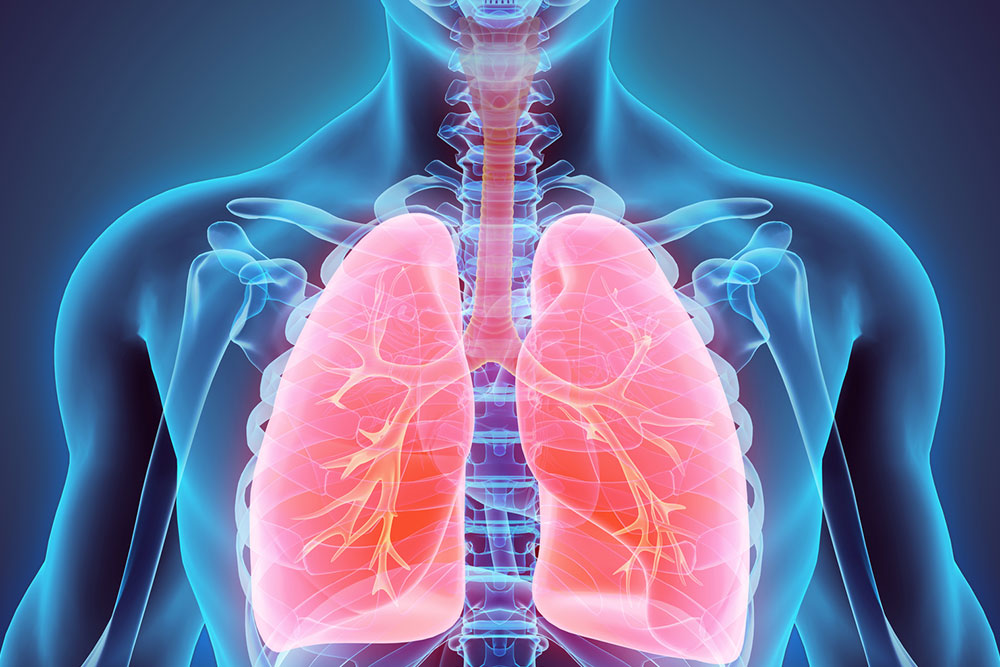Expert Guide to Diagnosing and Treating Thyroid Carcinoma
This comprehensive guide provides in-depth insights into thyroid carcinoma, covering causes, symptoms, diagnosis, and various treatment options. Emphasizing the importance of early detection and personalized management, it aims to inform patients and healthcare providers about effective strategies to combat this common endocrine cancer. Learn how advancements in medical technology and awareness contribute to better outcomes and long-term health maintenance for those affected by thyroid cancer.

Comprehensive Overview of Thyroid Carcinoma: Causes, Symptoms, and Effective Treatments
The thyroid gland, a vital butterfly-shaped organ situated at the front of the neck, just below the Adam’s apple, plays a crucial role in regulating various metabolic functions through hormone production. This small but significant gland produces hormones such as thyroxine (T4) and triiodothyronine (T3), which influence how the body uses energy, manages temperature, controls heart rate, and regulates weight. When abnormal cellular growth occurs within the thyroid, it results in thyroid cancer — a condition that, although often silent in its early stages, can develop into more noticeable health issues over time. Recognizing the signs early, understanding risk factors, and seeking prompt medical intervention are key to successful management and recovery.
Thyroid cancer constitutes the most common endocrine malignancy, impacting approximately 20,000 individuals annually in the United States alone, and accounting for roughly 1% of all new cancer diagnoses nationally. While it can occur at any age, it is notably more prevalent among women during reproductive years, although men and older adults are also at risk. Early diagnosis dramatically improves treatment outcomes, often leading to complete remission. Despite its increasing incidence over the past three decades, advancements in detection and treatment techniques have helped maintain stable mortality rates, making awareness and early intervention all the more essential.
Understanding the anatomy and physiology of the thyroid gland provides valuable insight into how cancer develops and affects health. The gland’s hormones regulate metabolism, which influences nearly every system in the body. Hyperthyroidism, resulting from excessive hormone production, can lead to symptoms such as heat intolerance, rapid heartbeat, unexplained weight loss, and increased sweating. Conversely, hypothyroidism, due to inadequate hormone production, causes cold intolerance, fatigue, weight gain, and hair thinning. The process of cancer development begins with genetic mutations—either spontaneous or induced by external factors—that transform normal healthy cells into malignant ones. Over recent decades, the number of diagnosed cases has increased, likely due to improved screening methods and heightened awareness, but the mortality rate has remained relatively steady, underscoring the importance of early detection and appropriate treatment.
Common signs of thyroid cancer include the presence of a painless lump in the neck, often discovered incidentally during routine examinations or self-checks. Most patients initially experience no symptoms and maintain normal thyroid function tests at this stage. However, as the tumor enlarges, it can interfere with swallowing or breathing and may cause hoarseness by affecting the vocal cords’ nerves. In children, neck lumps are more common, but any mass near the thyroid warrants prompt medical evaluation, especially if associated with symptoms like lymph node swelling or ear pain. Recognizing these signs early can lead to timely diagnosis and treatment—crucial factors for better prognosis.
The classification of thyroid cancer depends on the microscopic appearance of the tumor cells. It’s divided into well-differentiated and undifferentiated types, with various subtypes exhibiting different behaviors and prognoses. The primary subtypes include:
Papillary thyroid carcinoma
This is the most common form, accounting for a significant majority of thyroid cancer cases, largely affecting women in their reproductive years. It tends to be less aggressive, responds well to treatment, and has an excellent prognosis when detected early.
Medullary thyroid carcinoma
This subtype originates from the C cells within the thyroid that produce calcitonin. It is often linked to genetic syndromes such as Multiple Endocrine Neoplasia (MEN) and requires distinct management strategies due to its unique cellular origin and behavior.
Follicular carcinoma
Frequently affecting individuals over the age of 50, follicular carcinoma is known for its tendency to spread via the bloodstream and recur after treatment. An advanced form, Hurthle Cell Carcinoma, presents additional challenges due to its aggressive nature.
Anaplastic carcinoma
Representing less than 2% of thyroid cancers, anaplastic carcinoma is highly aggressive and often diagnosed in advanced stages. Its aggressive course and resistance to conventional therapies make it associated with a poor prognosis.
Thyroid lymphoma
This rare type originates from lymphoid tissue within the thyroid gland. It typically occurs in patients with pre-existing autoimmune thyroiditis, such as Hashimoto's thyroiditis, and requires a separate treatment approach involving chemotherapy and radiotherapy.
What are the causes and risk factors for thyroid cancer?
Despite extensive research, the precise cause of thyroid cancer remains elusive. Nonetheless, several risk factors have been identified that increase susceptibility. Genetic predisposition plays a significant role, with family history of thyroid or other endocrine cancers heightening risk. Environmental exposure, notably to nuclear radiation—such as diagnostic radiation procedures or atomic accidents—is associated with higher incidence. Iodine deficiency in the diet also contributes, as it impacts thyroid health, although excessive iodine intake can be problematic too. Certain thyroid conditions, including autoimmune thyroiditis, can predispose individuals to cancer development. Age and gender are important; women and individuals over 60 or under 30 are at different risk levels. Children exposed to radiation, especially near the neck, are particularly vulnerable. It’s important to note that routine diagnostic procedures like CT scans involve minimal radiation exposure and are not directly linked to thyroid cancer, but unnecessary exposure should still be avoided when possible. Proper nutrition, avoiding unnecessary radiation, and managing thyroid health are vital preventive strategies.
How is thyroid cancer diagnosed?
Diagnosis involves a combination of physical examinations and various tests. Initially, clinicians assess for palpable lumps, enlarged lymph nodes, or irregularities in the neck region. Diagnostic tools include high-resolution ultrasound scans to visualize the thyroid gland and identify suspicious nodules. Thyroid scintigraphy (also known as thyroid scans) can differentiate between hot (functioning) and cold (non-functioning) nodules, guiding further evaluation. Blood tests measuring hormone levels, calcitonin (especially for medullary thyroid carcinoma), and tumor markers help assess thyroid function and suspicious lesions. Fine-needle aspiration biopsy (FNAB) is the gold standard for obtaining tissue samples to confirm malignancy. Advanced imaging, such as CT or MRI, may be utilized to evaluate the extent of spread to surrounding tissues or distant metastases. This comprehensive diagnostic approach ensures precise staging and guides personalized treatment plans.
Thyroid cancer treatment options
Effective management of thyroid cancer typically involves surgical removal of the tumor and affected tissues, tailored to the tumor’s size, location, and spread. The primary surgical options include:
Lobectomy
This procedure involves removing only one lobe of the thyroid, suitable for small, localized tumors without evidence of metastasis. It preserves thyroid function, often eliminating the need for lifelong hormone replacement.
Total thyroidectomy
Complete removal of the entire thyroid gland is common for more extensive tumors or malignant types requiring comprehensive treatment to reduce the risk of recurrence. Following surgery, patients generally need lifelong thyroid hormone supplementation.
Lymph node dissection
If cancer has spread to nearby lymph nodes, these may be surgically removed to ensure thorough disease control. The extent of dissection depends on intraoperative findings and preoperative imaging.
Thyroid hormone therapy
Postoperative hormone replacement therapy is essential to maintain metabolic equilibrium and prevent hypothyroidism. Regular blood tests monitor hormone levels, ensuring appropriate dosage adjustments.
Radioactive iodine therapy
This targeted treatment destroys residual thyroid tissue and microscopic cancer cells that may not be visible or accessible surgically. It is particularly useful in cases with high risk of recurrence and involves pre-treatment preparation to optimize iodine uptake.
Radiation therapy
External beam radiation may be employed if radioactive iodine is ineffective or contraindicated. It can help control advanced or unresectable tumors.
Chemotherapy
Chemotherapy is rarely used for thyroid cancer, limited to cases resistant to conventional therapies or with aggressive anaplastic carcinomas. It may involve targeted drugs or combination regimens depending on the tumor type and stage.
Prevention and early detection
While the exact causes of thyroid cancer are not fully understood, preventive strategies focus on early identification of suspicious symptoms and reducing exposure to risk factors. Individuals with a family history of endocrine cancers should consider genetic counseling. Managing thyroid health through adequate iodine intake, avoiding unnecessary radiation exposure, and routine check-ups significantly aid early detection. Being vigilant about neck lumps, voice changes, or swallowing difficulties prompts timely medical assessments, leading to better outcomes.
Prognosis and long-term management
Early detection of thyroid cancer generally leads to favorable results, with high remission rates. However, certain aggressive or advanced cancers demand ongoing surveillance, including regular imaging and blood tests, to promptly identify recurrences. The success of treatment hinges on accurate staging, complete removal of malignant tissue, and adherence to hormone therapy protocols. Continuous follow-up ensures sustained remission and quality of life, with most patients living normal or near-normal lives following effective treatment.





